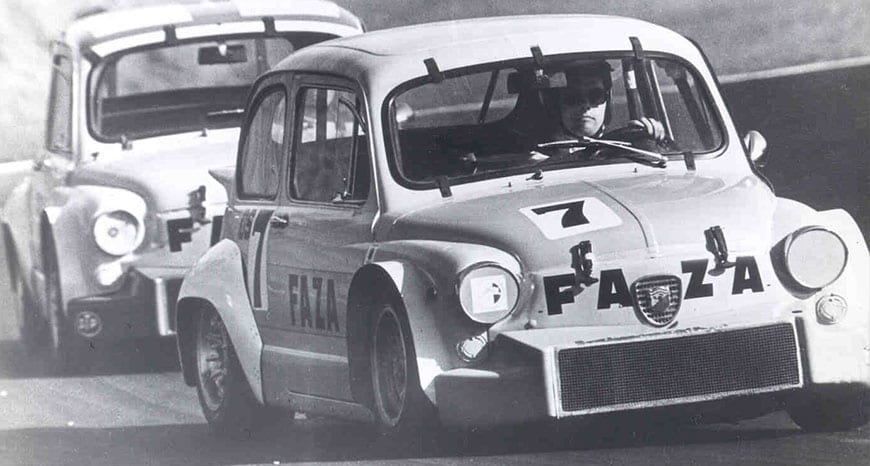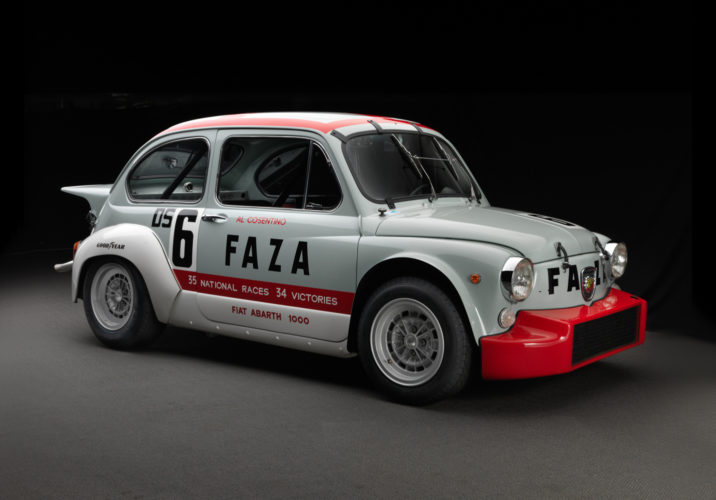Tech Specs
Four-cylinder in-line engine, pushrods with hemispherical combustion chambers, 982 cc, 112 bhp at 8200 rpm.
Before/After
1970 Fiat


About the 1970 Fiat Abarth TCR 1000 Berlina Corsa
When the Fiat 600 was introduced in the mid-fifties, every tuning shop in Italy rushed to improve its performance. (Several decades earlier an entire industry had grown up in this country devoted to helping Tin Lizzie become more than Henry Ford intended.) Most successful of the Fiat tuners was former Cisitalia project engineer Carlo Abarth. His Torino works became the largest racing factory in the world.
The first project to bear Abarth’s scorpion emblem had been a free-flow exhaust system in 1950 that was selling a quarter of a million units annually a decade later. Camshafts and pistons, among other components, as well as complete Fiat go-fast kits, followed for sale to dealers and individuals.
By 1960 Carlo had wrung the absolute limit of displacement possible from the little Fiat engine: one liter. More power required a new wrinkle which arrived in 1966 as the “Radiale” which confused folks awhile because the phrase seemed to suggest an aviation engine. Instead it represented hemispherical combustion chambers in a new pushrod head that bolted up to the Fiat 600 block as if it was meant to have been there all along. The Radiale generated more than 110 hp from 982 cubic centimeters at 8200 rpm, and bumped top speed to 125 mph.
The display car belonged to Alfred S. Cosentino. In 1963 he founded FAZA (Fiat Abarth Zagato Allemano) as both an import company and a racing team. And he became the scourge of SCCA D Sedan racing. By 1970, FAZA Fiat Abarths prepared and driven by Cosentino had won 34 of 35 consecutive national races. By the middle ‘70s FAZA team efforts had extended that remarkable effort to 51 victories out of 53 starts. It was wonderful fun.
For Abarth himself, the fun ended in 1971. This last Abarth had caught on with the racing fraternity but not the public. Abarth’s earlier twin-cam conversion was expensive; the Radiale, Carlo presumed, was just the ticket for those who wanted more power for fewer bucks. It wasn’t.
Abarth and Company was acquired by Fiat in 1971. Carlo Abarth died in 1979. But FAZA lives. And Alfred Cosentino continues to spread the gospel in books like the aptly titled The Fiat Abarth Bible.
Photos – Peter Harholdt










